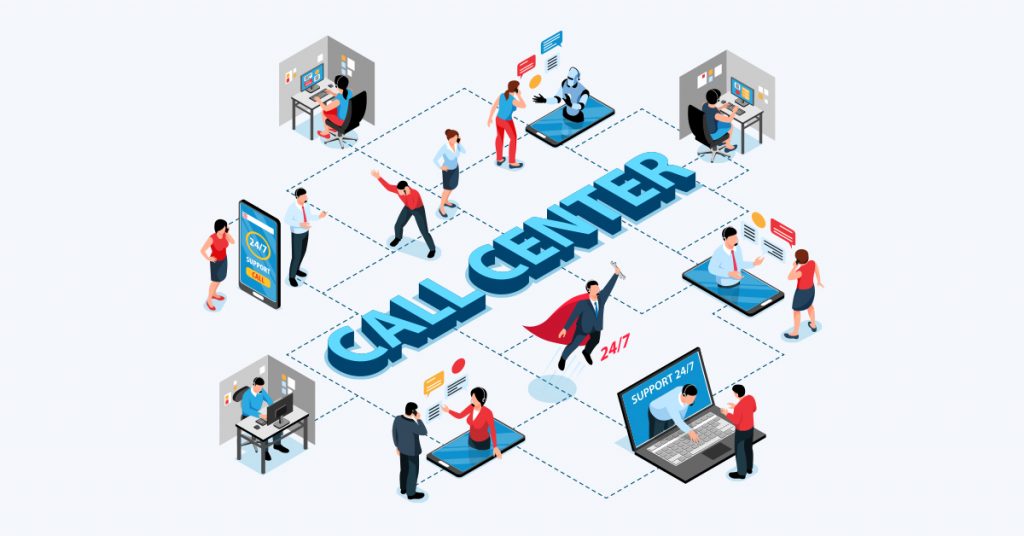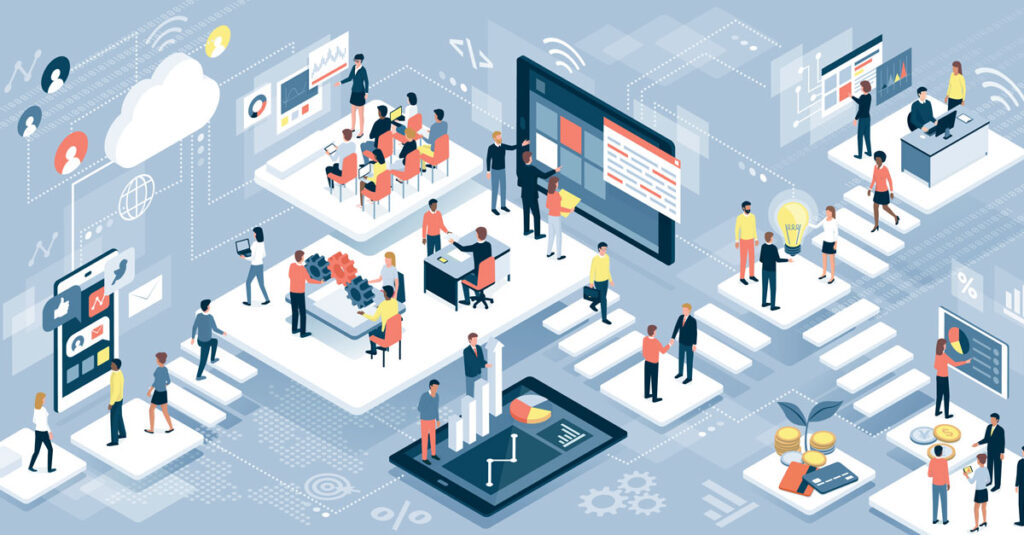In this article, you can access all the details about call center monitoring. See the details below to fully understand what’s good for your business.
What is Call Center Monitoring?

Call center monitoring is the practice of listening to customer calls that occur in the call center to ensure that customer concerns are addressed quickly and efficiently. At the same time, a call center has a central department that manages incoming and outgoing customers and possible contacts through a company. Common examples of call center monitoring include the following. These:
- Call log
- Provides the ability for the monitoring supervisor to join the call silently and take notes for the agent to provide feedback later
- It allows the agent to get guidance or advice from his supervisor when talking to a client on the phone. It also offers a very useful possibility with chat features.
What is the Importance of Call Center Monitoring?
Call center monitoring is very important to provide excellent customer service. It also shows your call center representatives that you care about your company’s performance.
- Skill development: Continuous feedback opportunities help agents succeed in their jobs and reduce the number of agents needed to manage calls.
- Provide accountability and documentation: Shows your agents that you care about the quality of their work, their level of professionalism, and with it, how it affects their customer interactions. It also provides critical documents in the event of a customer dispute with your company to record how many times they have had to call about a particular topic.
- Talent identification: Great call center agents also have skills that can benefit other teams, including sales and products.
- Reduce costs: Analyzing calls for common issues will also help you improve product documentation, your website, or other venues that may reduce the need for agent calls in the future. At this point, it offers you opportunities.
What Are the Best Practices You Can Use for Call Center Monitoring?

There are some practices that you should consider when setting up a call center monitoring solution for your team. You can find all this information below.
The Meaning of Success for Call Center Staff
Call centers can be fast-paced, stressful operations, especially during busy periods. The best-performing call centers develop Key Performance Indicators to capture the most important measurable measures of success or failure. It helps agents understand which metrics are most important to ensuring a successful customer experience. As an example, the call center tells agents that customers should stay on the phone longer than call again about the same issue. In this case, if the number of First Call Solutions is high, intermediaries will not have to worry about the fact that on average, the call times will be very long.
In some cases, there may be cases where your metrics can’t measure. In such cases, call centers need to give clear instructions to agents. It should be questioned whether they can use their judgment to solve a customer problem. Or do they need to forward it to a supervisor, you should know all this. Clear instructions help keep your operation running smoothly, even when you’re forced to quit the script.
Analyze All Searches
Many firms can record all calls. However, since they do not use the latest call center tools, they are likely to fall short on full call analysis. For those who make all these investments, the ability to analyze every search with artificial intelligence helps you create large data sets about all your customer experiences. It is also possible to find problematic calls that go unnoticed when marking them.
Allow Your Agents to Recognize Their Calls

Call center agents can generally recognize when they’ve made a mistake on a call. In other cases, it may be possible for them to miss something at that moment. However, when they listen to the call from the outside like a third party, it is only a matter of time before they solve this situation. It allows agents to listen to calls and think about how they can improve them. At the same time, it has become one of the most effective training tools because it has changed the feedback dynamic. Instead of telling the agent something they know, a supervisor provides appropriate assessments to show the agent what went wrong. The next time, he even thinks about how to fix it. If the agent doesn’t see the problem after multiple playbacks, they know they need more training on company-related issues.
Allow Your Customers to Submit Feedback
There is no better source of information about customer satisfaction than customers. Make sure you provide feedback opportunities regularly, including those below.
- Offer a survey after each interview.
- After an interaction, send email follow-ups to customers and ask for input.
- Invite customers to participate in conversations with supervisors to provide open-ended feedback on their experiences.
With all this information you have collected, you can also understand the minds of your customers. This is quite important. It also has important test data to compare with any automated sensitivity analysis that you can use for call recording.
Surveys also provide an important milestone for customers. They also let you know that you believe their problem has been solved. They don’t need any more help. If the situation does not progress in this way, they will respond quickly to let you know that they still think the problem is not solved.
What Are the Frequently Asked Questions About Call Center Monitoring?
We have defined call center monitoring and its importance for you. Now we’re going to cover some of the common monitoring issues of businesses for you.
How Many Calls Need to be Monitored in Call Centers?
Even if your company records all searches for documentation purposes, you can’t track every call manually. One of the most important points here is that every agent understands that a call they are open can be monitored at any time. Many companies use a strategy of tracking at least two calls per week from each agent, regardless of seniority. This also helps to ensure fair treatment. It will help even your most experienced team members get important feedback. Extra views are considered for the following situations:
- In the training of new call center agents
- For call center agents who have recently experienced performance issues
- For call center teams that also handle specific company incidents or disaster scenarios
In addition, call centers using scanning technologies can also adjust the number of monitored calls depending on the subject. For example, it’s possible to find that calls requesting a password reset, which take only a minute on average, don’t make the best use of a monitor’s time either.
How Big Should the Monitoring Team Be for a Call Center?

In general, it is necessary to know how many calls to monitor per agent. When determining the size of your quality assurance team as well, keep in mind that you may still have difficult choices to make. Companies generally carry low levels of staff during quiet periods. They can also have seasonal spikes to support peak traffic times. These situations don’t just mean more calls to be monitored. It will also mean that many more agents have just completed their training and require extra reviews and feedback.
Many companies equip their supervisors with KPI-focused dashboards to overcome all these problems. It also provides a real-time view of call center activity, helping supervisors assess where best to place monitors. It also helps your team have minimal downtime for their shifts.
Why My Call Center Monitors Need KPIs and Metrics
KPIs and metrics let you know how your almost entire business, from agent to supervisor, is measuring success. In short, it is at the heart of perfect call center monitoring. Commonly used for call center monitoring, metrics have the first-call solution, or the number of repeat calls a customer needs to make to resolve a single issue.
Analytics-driven call center monitoring helps determine how cost-effectively your company is also relying on customer service channels. In addition, it helps teams have real-time visibility into customer sentiment, including sales and product management. This ensures a continuous flow of business intelligence data across your company.
How Do I Reduce the Need for Customer Search without Decreasing Satisfaction?
The best practice looks for ways to increase customer satisfaction while reducing the need for calls, even in companies with a call center. The critical way to reduce calls is to provide ongoing training to further educate your agents about the online or self-service options available to them to resolve callers’ issues. Automatically implementing a phone system to view calls also helps direct customers with frequently asked questions to recorded answers, which eliminates the need for a live agent.
On a broader scale, omnichannel contact center solutions allow customers to get the help they need through their preferred channel, including phone calls, email, SMS, or social media. Users who prefer phone calls can use other channels for quick questions. This reduces the desire to talk to a live customer representative in general.

13 responses